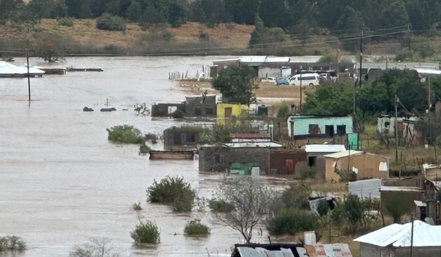The Department of Cooperative Governance and Traditional Affairs (Cogta) has confirmed that the devastating storms that swept through the Eastern Cape earlier this month have left 95 people dead, caused massive infrastructure destruction, and inflicted an estimated R5.2 billion in damages.
The storm, which battered multiple provinces in early June 2025, prompted the National Disaster Management Centre to declare a national state of disaster. However, Eastern Cape province emerged as the worst affected, with the districts of Amathole and OR Tambo suffering the heaviest human and infrastructural toll.
Among the 95 lives lost were 23 school-going children, while over 6,800 households were affected, leaving thousands displaced and vulnerable. Many families lost everything, with homes washed away, access roads blocked, and basic services such as electricity, clean water, and healthcare severely disrupted.
“The impact of the incident was multifold: loss of lives, displaced families, infrastructure damage, homelessness, livestock losses, disruptions of basic services, disrupted access to healthcare,” Cogta said in an official statement.
Preliminary damage assessments put the total cost of destruction in the Eastern Cape at R5.2 billion, with road infrastructure alone accounting for nearly R1 billion of that figure. However, the provincial department of transport has only been able to reprioritise R102 million from its existing budget to tackle the damage.
“We still face a shortfall of R832 million just for roads,” Cogta said, urging for more support from the national government and development partners.
Schools, hospitals, clinics, bridges, and government buildings were also among the infrastructure damaged or destroyed, raising concerns about the long-term recovery of the region.
While Eastern Cape took the brunt of the latest storm, KwaZulu-Natal (KZN) also recorded significant damage. At least 140 households were affected in KZN, with 58 homes completely destroyed and 137 others partially damaged. The floods impacted around 962 individuals, displacing 31 families.
KZN has become increasingly flood-prone, with back-to-back disasters in recent years. In April 2022, a catastrophic flood event claimed over 400 lives and cost an estimated R17 billion in damages. This was followed by another R3 billion in damages due to floods in 2024, alongside rare snowstorms later that same year.
Disaster analysts and civil society groups say the frequency and intensity of extreme weather events — including floods, storms, and droughts — are becoming more severe due to climate change, poor infrastructure planning, and ineffective early warning systems.
Critics argue that many of the deaths and displacements could have been avoided if municipalities had better disaster readiness, housing regulation enforcement, and drainage systems.
“South Africa’s most vulnerable people are repeatedly being hit by disasters while recovery efforts are still underway from previous ones,” said one climate policy expert.
Cogta says emergency relief efforts are ongoing, including the provision of temporary shelter, food parcels, clean water, and medical support for affected families. The department has called on the private sector, non-governmental organisations (NGOs), and international partners to assist in relief and rebuilding efforts.
“The scale of this disaster demands collective action from all sectors,” Cogta said. “We must build back better, with resilience in mind.”
However, many affected families remain in temporary shelters or cramped community centres, waiting anxiously for permanent solutions to their displacement.
